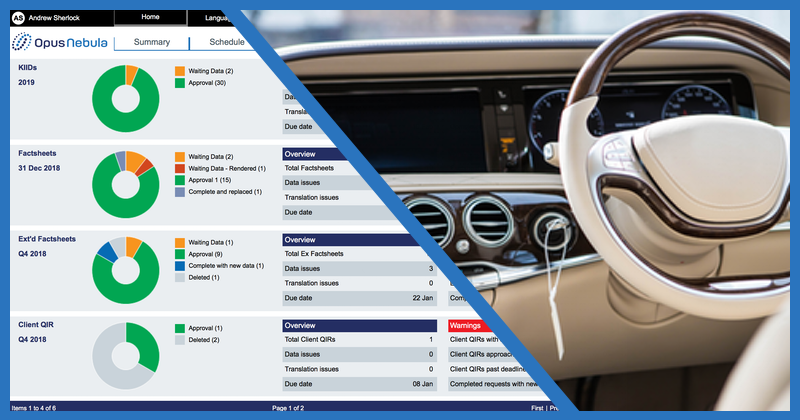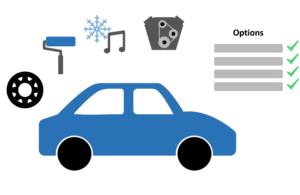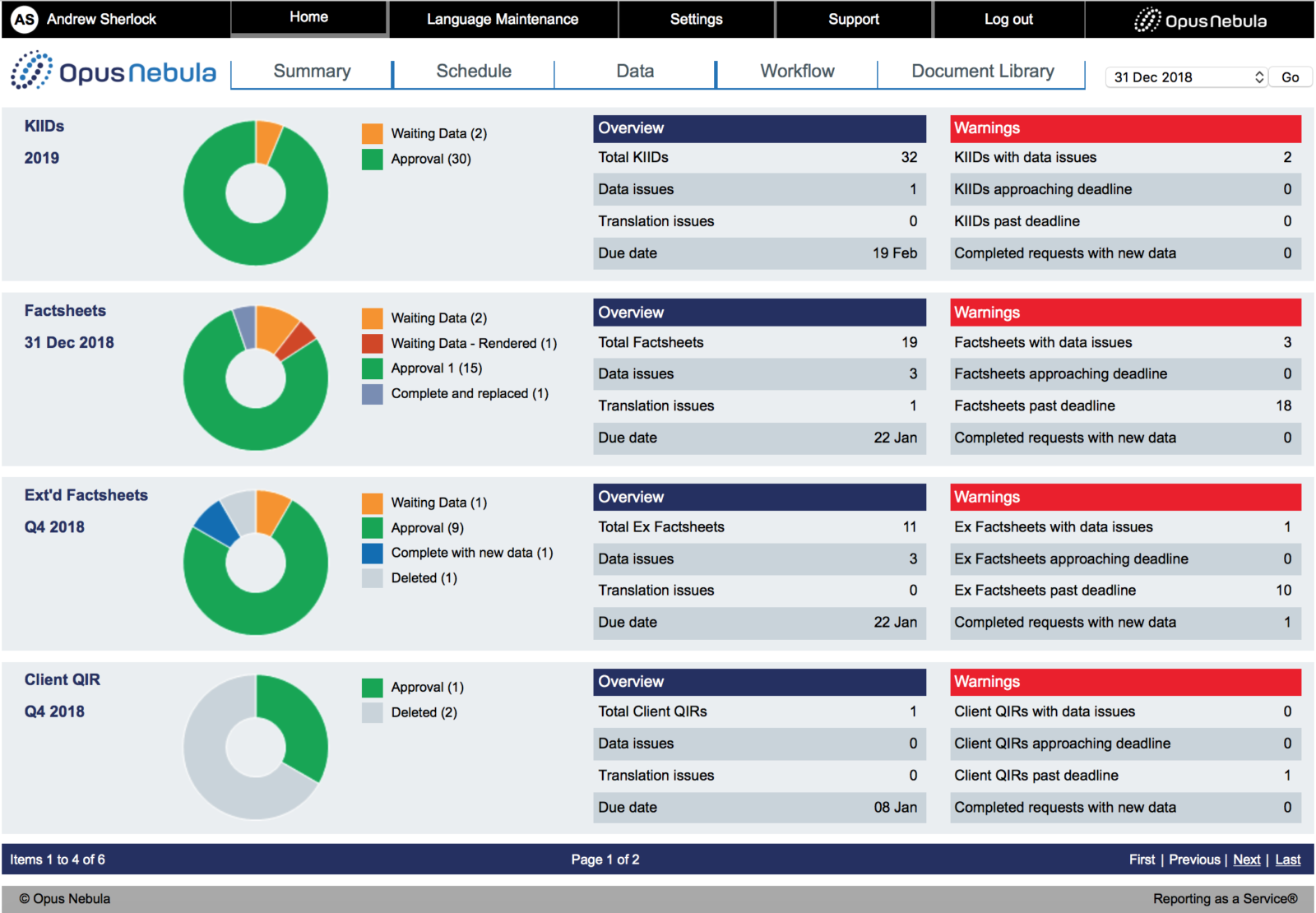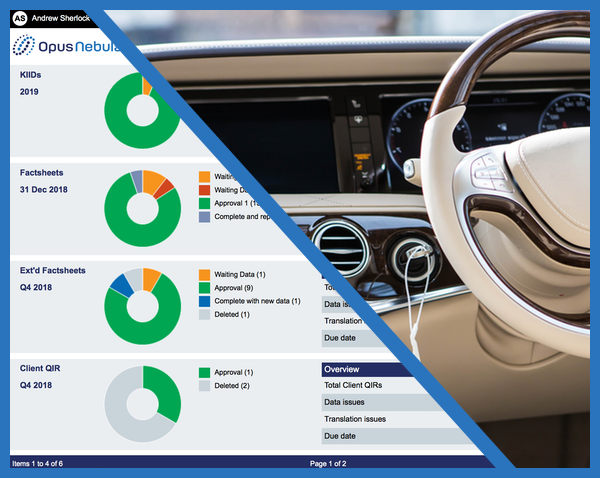At first glance, there may be few similarities between buying a new car and buying a new client reporting system. However, in fact there’s much we can learn from the motor trade that’s helpful to selecting a new reporting system for your client and fund reports.

When buying a new car, there’s an options list. This options list allows you to “personalise” the car to your requirements. The options typically include:
- Exterior paint colour
- Inside trim material and colour
- Wheels: design, material, size
- Engine: type of fuel and size of engine/power/economy etc.
- Sunroof, air-conditioning and the lists go on…
 By being able to select certain elements of the car, it is more personalised to you.
By being able to select certain elements of the car, it is more personalised to you.
Interestingly the options list doesn’t include items such as how the steering wheel works, where the gear lever is located, which pedal is the accelerator and which is the brake, where the dashboard is located and what it displays. Nor does the options list include the strength and size of the nuts and bolts used, or how fast the indicators should flash and any other number of items that make up the core of the vehicle.
This is because these elements should be the same for all buyers. The options list would be massive if every nut, bolt, wire, fitting and bulb had to be individually specified and selected in the options list. It would be impractical for buyers to review and select each element of the car, and it would be hugely expensive and time consuming for the vehicle manufacturer to assemble the vehicle with so many options. If cars were supplied in this manner, only the very richest of individuals would be able to afford one and the waiting time for assembly and delivery would probably be incredibly long.
So why do we buy client reporting systems in this way?
When investment firms decide to “buy and build” a client reporting solution, taking the car analogy above they are, in effect, building an options list for every single element of the car. Thus, the time, cost and effort required to specify and build the client reporting system is large – as it would be for the car with that many options.
Client reporting systems, much in the same way as a new car, just need to be “personalised”, for specific items. In a client reporting system, the elements that require personalisation are remarkably small, they include:
- Data ingestion: file format, content and delivery
- Users, roles and permissions
- Workflow, including linkage to users and teams
- Report and content output: branding, layout, content, meta data
- Automated distribution: delivery mechanism, files, naming conventions, recipients
The dashboard of the car is common to all buyers, in the same way the dashboards of the client reporting system can be common to all investment firms. In a car, the dashboard informs the driver of a number of variables, such as the speed they are travelling, how high the engine is revving, how much fuel they have left in the tank and so on. The standard controls of the car, such as the accelerator, the gears and the brakes allow the driver to control and manoeuvre the car as required.
 Similarly, with the client reporting dashboards, these inform the user of the current state of their reports as they move from data arriving, initial render through review, approval, completed and to despatched. The user controls in the client reporting system allow the users to monitor and manage the entire reporting process for their reports.
Similarly, with the client reporting dashboards, these inform the user of the current state of their reports as they move from data arriving, initial render through review, approval, completed and to despatched. The user controls in the client reporting system allow the users to monitor and manage the entire reporting process for their reports.
You can see, there’s little to be gained by building your own client reporting dashboards and other controls – the main “core” of the reporting system can be common to all investment firms – the difference is the data, the users, the reporting outputs and the clients, and these elements should be configured to your precise requirements and set-up.
These principles underpin Reporting as a Service®, whereby we have identified the “core” elements that are common to all investment firms, and those elements that require configuration to exactly match each investment firm. We have made the configuration straight forward, so that our set up time and the fees are minimised. Thus, the investment firm can enjoy improved reporting and more efficient reporting in a number of weeks, rather than a number of months or even years that is typical of the build and buy model.
Of course, any additional specific elements or additional functionality that firms require can simply be added to the system.
In conclusion
To conclude, Reporting as a Service provides a pre-built client and fund reporting solution to investment firms, with an options list that allows for exact configuration to their precise reporting requirements, users and operating model. Rather like a new car, many of the core parts are common to all buyers. This approach allows for reduced costs, faster delivery, reduced risk and with no loss of functionality.
Maybe one day, all reporting systems will be built this way.
Reporting as a Service explained…
Reporting as a Service is a world-class reporting solution securely hosted in the Microsoft Azure cloud. Our solution contains all the features you would expect of a truly world-class reporting system, and some that perhaps you hadn’t thought of.
On-boarding to Reporting as a Service is measured in weeks, just enough time for us to configure the reports and portal to exactly match your content, layout and branding, to configure our powerful data loaders to import and validate your data, to set up and configure your users for their various roles and finally to configure the automated report distribution. The entire reporting process is controlled and managed by your business users, using simple and straight-forward user dashboards.
Our initial set-up costs are fixed, and then you only pay for the reports you produce and store. No more huge project and system costs, these are replaced with a simple tariff, with volume discounts.
Our set up process is highly repeatable and measured in weeks, not months or years.
See www.opus-nebula.com and contact [email protected] for more details or to arrange a demo of the solution.
Andrew Sherlock
Opus Nebula

